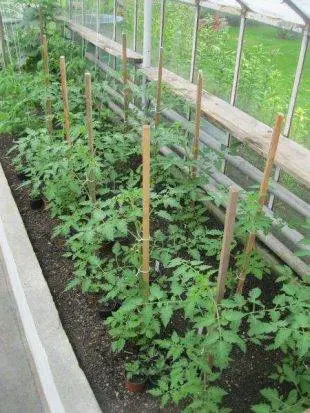Contents
The most delicious are large-fruited pink tomatoes, the fruits of which are shaped like a heart. This is exactly what the Danko tomato looks like: a large, fleshy fruit with a thin skin of a bright pink hue, sweet pulp and a strong aroma. The Danko variety is considered salad, like all pink-fruited tomatoes, it is recommended to use it fresh, use it for making summer salads, lechos, pastas and sauces. But not even the taste of this tomato became the key to its popularity – Danko is very unpretentious, and you can grow it in almost any region and in any climate.

A detailed description and description of the Danko tomato variety are given in this article. Here you can also find a list of the strengths and weaknesses of a tomato, learn how to grow it, and how to increase productivity.
Variety description
Those who have planted Danko at least once in their area will certainly return to this tomato again. The tomato is not high-yielding, but it bears fruit stably, regardless of climatic and other external factors.
The Danko tomato variety was bred by domestic breeders, and it belongs to the Siberian selection of tomatoes. And this means that the tomato tolerates low temperatures and lack of sunlight very well, that it is not demanding on the composition of the soil and is ready for any weather changes.
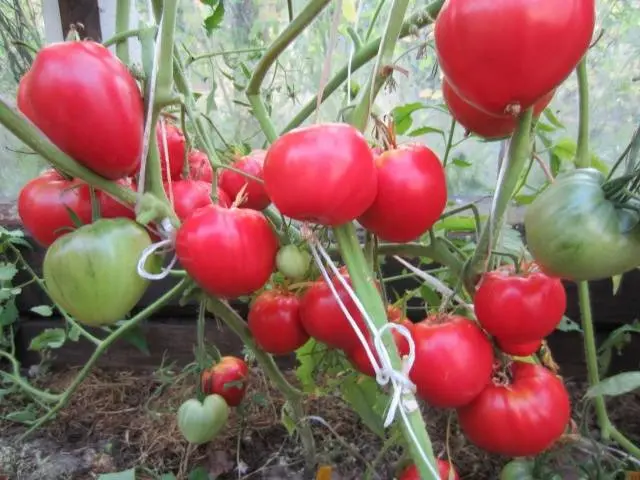
Characteristics of the Danko variety:
- tomato determinant type, that is, the bushes have an end point of growth;
- the height of the bushes is small – about 50 cm, they are compact, not too thick;
- universal variety: suitable for growing in the ground and in a greenhouse (in greenhouses, a tomato can grow up to 120 cm);
- the ripening time of the fruits is medium early – 110 days after the emergence of seedlings, the tomatoes will begin to turn pink;
- it is recommended to form Danko bushes in 3-4 stems – this will significantly increase the yield of tomato;
- it is not necessary to pinch a tomato; when growing in a greenhouse, bushes may need support;
- Danko variety well tolerates not only cold, but also severe drought, summer heat;
- the largest tomatoes are formed in the lower brushes;
- the shape of the fruit is heart-shaped, the surface with a barely noticeable ribbing;
- the color of unripe tomatoes is light green, when the tomatoes ripen, they turn red-orange, have a dark green spot near the stalk;
- the average fruit weight depends on the method of cultivation: in the ground – 250 grams, in greenhouses – about 400 grams;
- the taste of Danko tomato is excellent, the pulp is sugary, dense, very sweet;
- the peel on the fruit is thin, so Danko is not suitable for long-term storage and transportation;
- the appointment of tomato salad – it is best to eat them fresh;
- the yield of Danko tomatoes shows an average – about 3-3,5 kg from each bush;
- the presentation of the Danko tomato is good, but because of the thin peel, they often crack;
- the variety has good resistance to “tomato” diseases, is rarely affected by pests;
- due to early ripening juices, the tomato is rarely more late blight, which peaks in August.
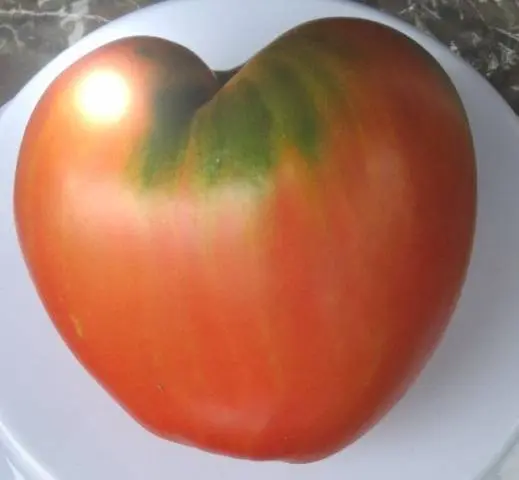
Advantages and disadvantages
Reviews about the Danko tomato are mostly positive. The most important quality of this variety is its versatility: you can grow Danko on open ground in any region of Our Country (from the south to the Urals), this tomato is also suitable for planting in a greenhouse, it does not need a lot of light and heat for normal development.
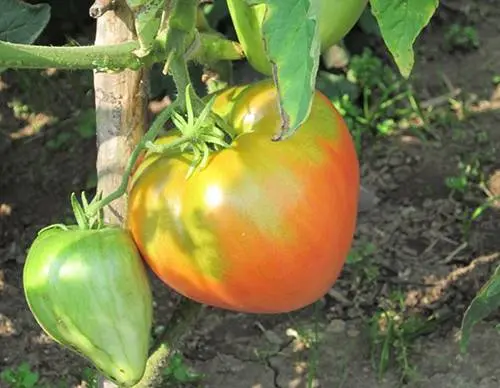
Danko tomatoes have several other important benefits, such as:
- excellent taste qualities;
- beautiful appearance of the fruit (which is proved by the photo from the article);
- large sizes of tomatoes;
- compact bushes;
- good yield;
- immunity to various diseases and resistance to pests;
- the ability to bear fruit in difficult climatic conditions (whether it be intense heat, high humidity, drought or uncharacteristically low temperatures for summer).
It is clear that the description of the Danko variety will not do without flaws. After all, like all pink tomatoes, this tomato does not tolerate transportation well, it is unsuitable for growing on an industrial scale, it can crack from excessive soil moisture.

Although the Danko variety is able to bear fruit in poor conditions, the tomato yield will sharply decrease in this case – the fruits will begin to form in limited quantities. The complexity of agricultural technology is added by the fact that the tomato grows stronger in greenhouses, so its bushes will have to be tied up or look for support for them.
Agricultural practices
The technology for growing Danko tomato will largely depend on the region, because depending on this, planting dates, care and harvesting activities change. Although the tomato is unpretentious in nature, it is stupid to expect high yields from Danko without paying any attention to it. Like all cultivated plants, this tomato loves to be looked after: fed, watered, and so on.
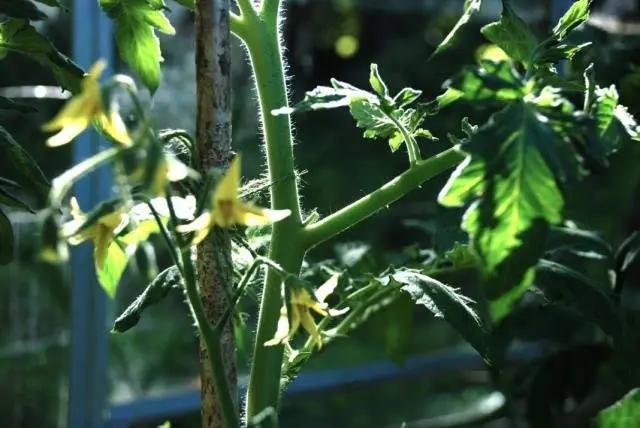
How to plant tomatoes correctly
Danko in Our Country is grown only in seedlings. Therefore, the first thing a gardener should do is buy Danko tomato seeds and sow them to get seedlings.
The timing of sowing tomato seeds depends on the climate in specific regions. So, in the central part of the country, early ripe tomatoes are sown in early March. Seed preparation for planting can be done in the last days of February.
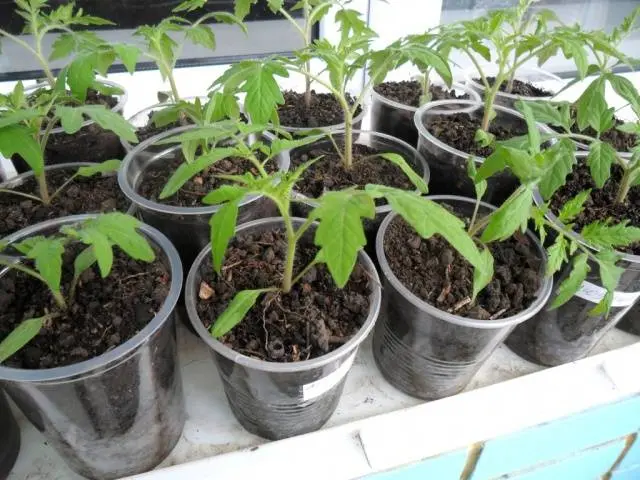
Danko tomatoes are a fairly common variety, so it will not be difficult to find seeds for sale. It is better to give preference to processed planting material, completely ready for sowing.
If the gardener independently collected tomato seeds or bought raw material, you can not ignore rules for preparing a tomato for planting:
- rejection of empty seeds;
- warming up the planting material;
- disinfection of tomatoes with a solution of potassium permanganate, hot water or other means;
- stimulation of germination by soaking tomato seeds in biostimulants (such as Epin, for example, or aloe juice);
- germination in a humid and warm environment.
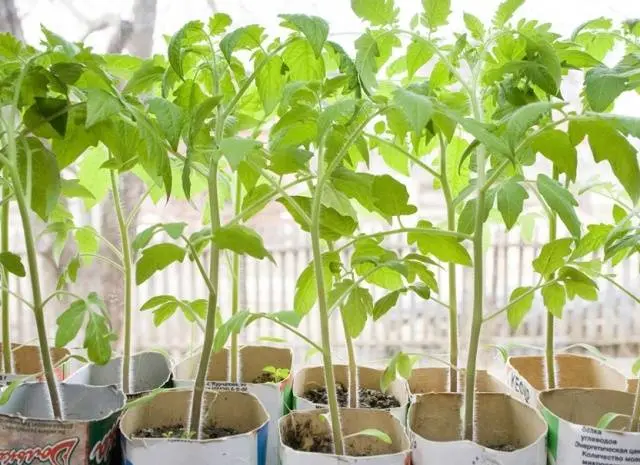
It is necessary to plant Danko tomatoes in loose and nutritious soil, which is able to pass air and moisture. It is easy to prepare a mixture for seedlings on your own: for this, garden soil is mixed with sawdust or peat, sand is added for looseness, fertilized with mineral components in the form of potassium and phosphorus, or organic matter (wood ash, lime, humus) is used.
Danko seedlings must be dived when the first pair of true leaves appears on the tomato. This process helps prevent stretching of tomatoes (which often happens to seedlings due to lack of light in the northern regions of the country) and stimulates the root system (lateral roots will begin to actively grow).

Danko tomato seedlings are taken out into the ground when the soil warms up to +10 degrees, and the threat of night frosts has passed (in the north of the country, tomato planting does not begin until June 10). The optimal planting pattern is 4 bushes per square meter, but these tomatoes can be planted denser.
Tomatoes are transferred to greenhouses around the twentieth of May (in southern Our Country this is done a couple of weeks earlier). No need to plant Danko too densely, as in greenhouse conditions this tomato grows stronger. You also need to consider a way to tie up tall bushes.
How to take care of plantings
The Danko tomato variety is indeed unpretentious when compared with other pink-fruited and heart-shaped tomatoes. However, this does not mean that the bushes do not need to be looked after at all – like any tomato, Danko needs the constant attention of the gardener.
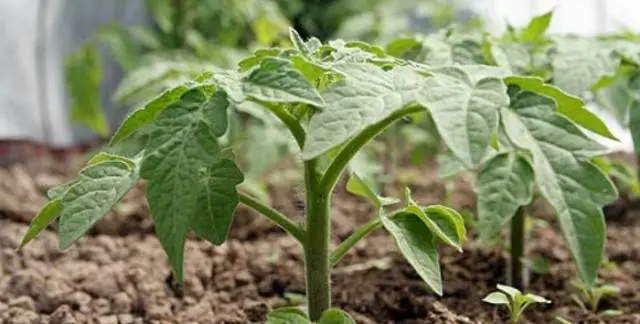
Caring for tomatoes is as follows:
- Watering. Tomatoes are watered as the soil dries out. This is best done in the evening when the heat subsides. Water for irrigation is taken settled, warm. Danko tolerates periods of drought well, but the gardener must understand that this will certainly affect the size and number of fruits.
- Danko form, removing all shoots except the first three or four. If this is not done, the fertility of the plants will be weak.
- Tomatoes are necessary weed, hill up, the earth between the rows is periodically loosened, preventing it from cracking. To save his own time and effort, the gardener can use mulch, which will protect the soil from drying out and prevent grass from growing.
- A couple of times per season fertilize, use both organic and mineral complexes. The gardener should not overdo it with nitrogenous dressings, as they only lead to an increase in green mass (the bushes will be beautiful, but the tomatoes will not form on them).
- If traces of the disease are noticed, it is necessary to immediately process tomatoes with a special tool. In order to prevent Danko infection, it is better to carry out preventive spraying of the bushes even before they bloom.
- Bushes growing in greenhouses tie up. If a lot of fruits are tied on the ground, they can also be tied up so that the shoots do not break off.

- Harvested on time, not forgetting the predisposition of Danko fruits to cracking.
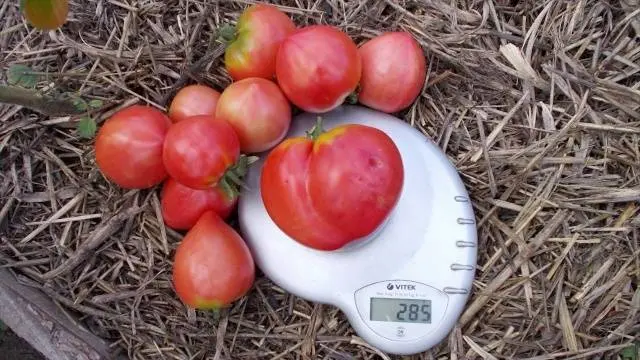
Write Your Review
Conclusion
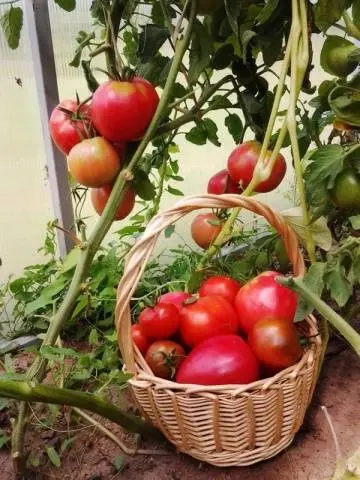
The Danko tomato variety is ideal for gardeners and summer residents from the cold regions of Our Country, although this tomato is able to endure both heat and drought. It is not recommended to grow this variety on an industrial scale, as the fruits quickly deteriorate and crumple during transportation. The tomato is very persistent, unpretentious, beautiful and tasty – what else does a gardener need!










